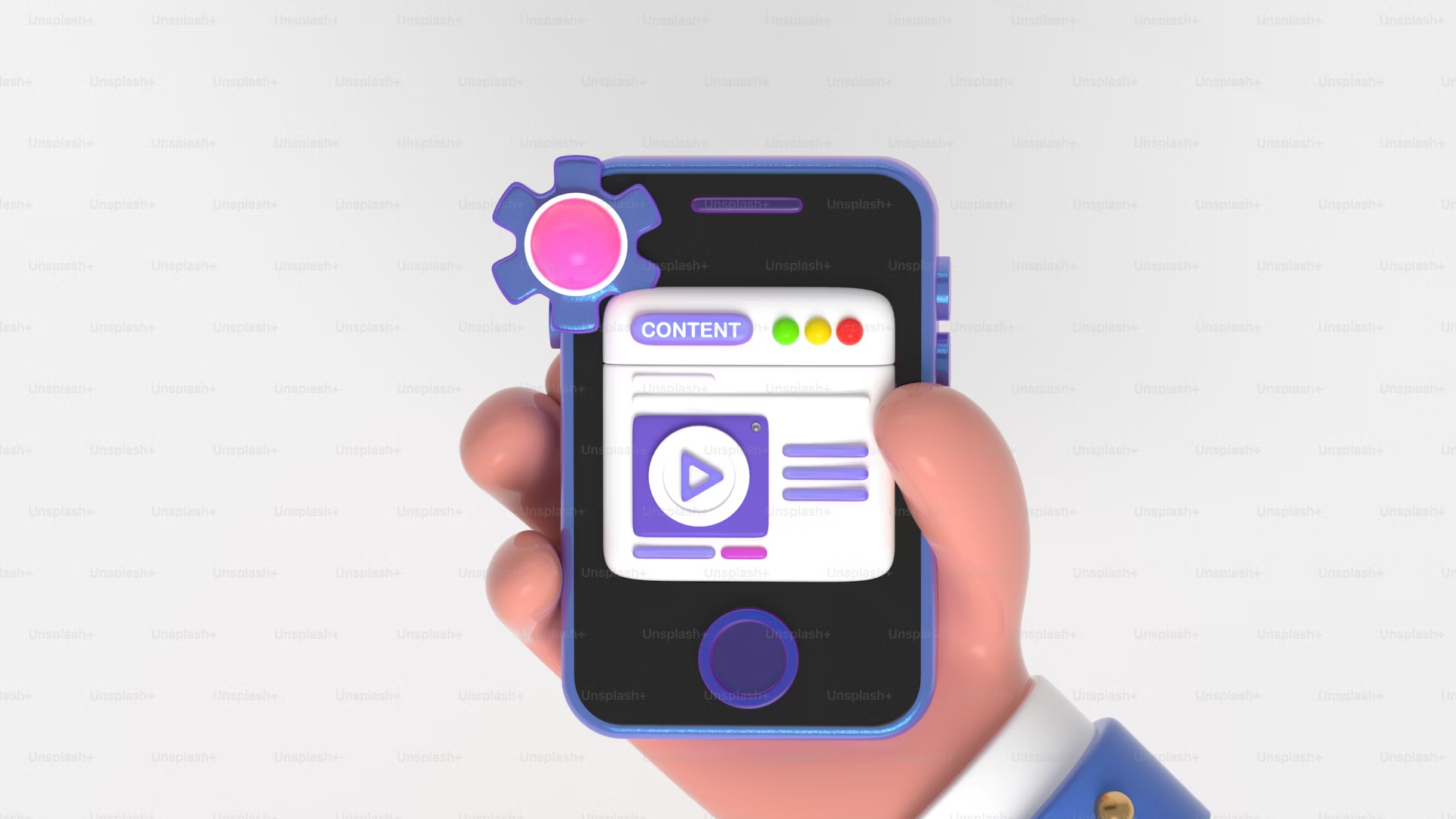How to Improve Website Navigation for a Better User Experience?
A customer is eager to find information or buy something when they land first-time on your website. Therefore, a website owner like you should provide a seamless experience rather than a maze of confusion.
Quick Links
If the website provides intuitive navigation, then customers will glide through sections easily to find what they need from the website.
On the other hand, if your customer is tangled in a web of links or confusing menus, it increases their frustration and they might abandon the website right away.
Therefore, good navigation is paramount to allow customers to glide through the content and functionality with ease.
It illustrates why website navigation for better user experience is not just a nice-to-have feature but a crucial element of web design.
Excellent navigation means providing clear signposts to avoid wasting time and energy.
Such a clear navigation not only enhances satisfaction but also fosters loyalty and encourages customers to return many times.
Today’s discussion is all about providing good navigation on your website to improve the user experience for your customers.
We will also recommend a relevant plugin that will help you achieve great navigation on your website.
Keep reading and let’s dive into the details.
The Impact of Poor Navigation on User Retention
It might feel annoying if you are walking into a store with mixed-up aisles that don’t make any sense and you can’t find what you need.
The same happens if a website is designed with poor navigation. Customers come into your online store and they can’t find the right products. It frustrates them and makes them leave the website quickly.
It not only makes them feel bad but also means they probably won’t stay on your site for long. As a result, your bounce rates go up and user retention goes down.
You can imagine now how it will affect your online brand. Customers will perceive it as an untrustworthy website that doesn’t care about the details.
However, on the other hand, well-organized navigation compels customers to explore, engage, and come back to know more about your website. It turns them from a casual visitor into a loyal customer.
It ensures they find what they need with every click.
Conducting a Navigation Audit: Tools and Techniques:
A navigation audit is like a thorough check-up for your website navigation. You can use various tools and techniques to diagnose the website navigation. Therefore, you need a few handy tools to asses how your website navigation works. Let’s explore them one by one.
Analytics Tools
The first tool is a Google developer tool called Google Analytics. It allows you to dig deep into customer behaviors and reveals which pages are performing well in the searches. Hence, you can assess that data and identify the bottlenecks to solve them and improve the website navigation.
Heatmaps
Heatmaps are another invaluable tool. Services like Hotjar or Crazy Egg visualize where users click, scroll, and hover. This data reveals how intuitive your website navigation truly is, highlighting elements that attract attention and those that go unnoticed.
User Testing
User testing is the most important of all because it’s linked directly with your customers. User testing is a process to get feedback directly from your customers. You can assess how customers are interacting with your website and also pinpoint the issues that might not be obvious through analytics alone.
UserTesting & Lookbacks are excellent user testing tools that can facilitate these sessions and provide valuable insights about your customers.
Broken Links and Outdated Content
Last but not least are broken links and outdated content. You can use tools like Screaming Frog to check your website and identify issues with broken links and outdated content.
Identifying Common Navigation Issues:
Finding out the common navigation issues is crucial for a smooth user experience on your website. Here are twelve common navigation issues that can hinder user experience:
- Confusing menu labels that leave users guessing
- Overcrowded navigation menus with too many options
- Hidden navigation menus that aren’t immediately visible
- Broken links that lead to error pages and dead ends
- The lack of a search bar makes it hard for users to find specific content
- Non-responsive design that breaks navigation on mobile devices
- Inconsistent navigation across different pages
- Dropdown menus that are difficult to interact with
- Poorly organized content that makes essential information hard to find
- Missing breadcrumb trails, leaving users unsure of their location on the site
- The lack of visual hierarchy makes it hard to distinguish between primary and secondary links
- Slow-loading navigation elements that frustrate users and increase bounce rates
Enhancing Navigation via Plugin:
One of the best solutions to improve the navigation of your website is using a plugin like Ajax Pagination & Infinite Scroll. It loads the content automatically for customers to scroll down and don’t have to click through other pages.
It makes the experience smoother and keeps visitors on your site longer.
Ajax Pagination and infinite scroll are effective in blogs and online stores where customers want to check out products or information quickly.
Ajax Pagination and infinite scroll are effective in blogs and online stores where customers want to check out products or information. It adds new content or products as customers scroll down to see more.
Let’s explore the feature of the plugin:
- Three Different Product Loading Methods:
- WooCommerce Infinite Scroll: It automatically loads new content as you scroll down the page
- Ajax-Based Pagination: It loads new pages without refreshing the entire site
- Load More Button: It adds more content with a simple button click
- Decide the number of products to show on the page load
- Personalize the look and feel of your paginator
- Upload your spinner icon for infinite scroll and load more buttons while contents are still loading
- Change the position and color of Ajax pagination and infinite scroll
- Easily scroll back to the top by clicking it once
- Increase the number of products per page if you want a lesser number of columns
- Customize your text, background color, and font
Importance of Internal Linking for Search Engine:
Your content needs internal links to rank higher in Searches. Google ranks those posts and pages that are linked somewhere on the web.
They connect your content with Google and give it an idea about the structure of your website. It establishes a hierarchy and shows the most important pages to the searchers.
Therefore, the right internal linking strategy boosts your ranking in Google.
In this section, we will discuss how internal linking can boost website navigation and allow your website to perform well in searches.
What are Internal Links?
Internal links are a navigational pathway that takes from page to another within a website. Both Google and your website users use links to find the relevant content on your website.
It will be hard for both the customer and Google to find the content without the internal links.
There are various kinds of internal links on your website. Some are in the form of homepage menus, posts, feeds, etc. others are called contextual links that direct website visitors to interesting content on your website.
The search engine determines the value and kind of the content on your website. The search engine will consider those websites that have a significant number of internal links.
Why Links are important in the Google World?
Internal linking is an important factor for Google to discover and rank the content on websites.
When a post or page has more internal links, it signals the Google that the content has higher value.
Moreover, internal linking is the most important arsenal for store owners to direct users to the most important pages.
The below mentioned factors reveal why intenal linking is great:
- Build relationship between Content:
Google uses a tool called Googlebot to crawl through websites via internal and external links. They arrive at the homepage of your website, check the page, and follow the link to navigate further.
Google uses these links to check out the relationship between the pages, posts, and other content on your website. This way, Google finds out which pages on your website cover the same topic and other important matters.
SEO junkies make sure Google understand the architecture of the website by using the internal and external links.
- Link Value:
Google divides the link value between all the links on the web page to understand the relationship between the content.
The homepage has often the most link value because it refers to most Backlinks. It will be shared among different links on the website.
Therefore, the newly uploaded blog will receive more link value if you have linked it with the home page rather than other category pages.
Final Conclusion:
We have seen and discussed how website navigation plays an important role in building a strong user experience.
The website with intuitive navigation is considered excellent in terms of user experience because it helps customers find the relevant content easily.
On the other hand, if your customer is tangled in a web of links or confusing menus, it increases their frustration and they might abandon the website right away.
Why WooCommerce is the Best Choice for Your Online Store?
WooCommerce stands out as a top option for anyone looking to build an online store. This platform…
0 Comments8 Minutes
How to Use AI-Powered SEO Tools for WordPress eCommerce
SEO is a critical factor in the success of any e-commerce WordPress store. As competition…
0 Comments11 Minutes
Why Short-Form Videos Are the Future of Content Marketing
Your Instagram customers spend over 50% of their time watching short-form videos and reels. Rather…
0 Comments12 Minutes
The Role of Digital Marketing in Business Growth
Online marketing touches every aspect of a business, whether it is initiating the idea or for an…
0 Comments3 Minutes
AI Meets Authenticity: Balancing Automation and Human Touch in Content Marketing
Is your brand starting to sound like a robot? In a world where algorithms write faster than any…
0 Comments8 Minutes
Essential Tools for Enhancing Web Design and UX Hosting
Have you ever visited a website that felt slow, clunky, or confusing? A website that is poorly…
0 Comments11 Minutes
How a Mini Cart Transformed My Store’s Shopping Experience
Okay, real talk—running an online store is hard. You think you’ve got everything figured out, you…
0 Comments9 Minutes
Balancing Your Security Initiatives With Industry Compliance Requirements
Managing a business today comes with a number of daily battles that need to be fought. Resources…
0 Comments11 Minutes








